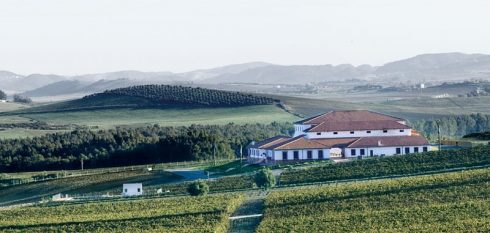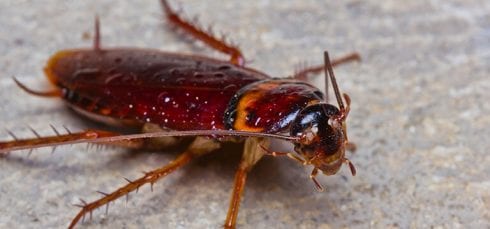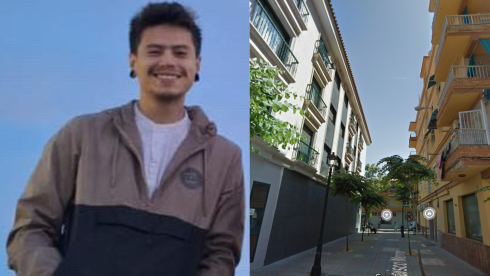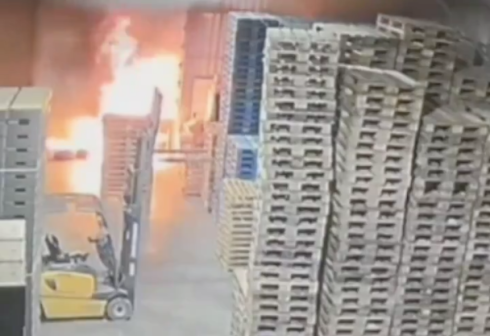Geoff Garvey visits Cadiz bodega Huerta de Albala to check out a vintage that sent wine gurus Robert Parker and Jancis Robinson into raptures
A FEW kilometres east of the ancient whitewashed town of Arcos de la Frontera spreads a stretch of verdant rolling country that is home to a vineyard making one of the most unusual wines in Andalucía: a top-drawer red that has drawn acclaim from many of the world’s leading wine experts.
When you eventually find them, in rolling hills alongside the Grazalema natural park, the vineyard buildings with their pantiled roofs have the look of an ancient Roman country villa, which is no accident, explains owner Vicente Taberner on a bright and crisp spring morning under a cerulean sky.
The wiry, tanned valenciano, wearing a white linen Ralph Lauren shirt and blue denims, explains: “The building was designed to take into account the site’s history, which includes a roman villa that we found when we started planting vines here in 2000.”
We are soon driving a circuitous route around the vines to reach a covered area used by the bodega to park its tractors.
I followed Vicente as he threaded his way through the tractors and other machinery and we climbed down into a gully where three or four sizeable dressed stones were peeping out of the earth.
“This was an important building and, with stones this size, probably very grand,” he adds, explaining that he had contacted the provincial archeologists to ask if they would excavate it, but there were currently no funds to do so.
In the meantime they advised him to leave the site under the earth where it would be safe. “So we planted the vines around it and there it lies,” he says pointing to the three-metre high earth mound. “Our mysterious Roman villa.”
Back in the bodega Vicente explained to me the dream that had brought him to this corner of Andalucía to make quality wine. In the eighties and nineties he had built up a successful business in Frankfurt, Germany, importing Spanish wines. He still lives in Frankfurt and visits the bodega for one week each month to oversee affairs. “I will move here in the next few years, but I’m married to a German and my children have grown up there. Once they are through university we plan to move here.”
Nature makes the wine – we make small adjustments to allow nature to produce her best
He is soon showing me the crusher where the grapes are tipped from the collecting trucks into a great stainless steel tank with a mechanism in the bottom to crush and de-stalk them before the grape juice is pumped along gleaming pipes into the vats.
“This is where it all begins,” he says staring down into the gleaming tank, probably no doubt making sure everything was as scrupulously clean as it looked. “Well, I must correct myself there,” he added, looking up. “Over there is where it begins – and ends,” he said pointing to the rows of vines marching away up the hillside outside the bodega. Nature and the vines make the wine. What we do in here are the little adjustments to allow nature to produce her best.”
Next we are in the fermentation hall, where two lines of huge oak vats sit silently at work, turning the grape juice into wine.
“French oak, medium toast” he says patting one of the vats affectionately. “They cost me twelve-thousand euros each and every couple of years I have to replace them with new ones. Running a good bodega doesn’t come cheap.
“Many bodegas let them go for many more years than that. But not me. I am interested only in quality. The new oak gives much to the wine, but when horses are exhausted they have to be replaced.”
He then beckoned me to follow him. “Come, let me show you my pride and joy, the sacristía, where we make the Taberner No.1.” As we headed to the other end of the bodega he explained that while selling imported Spanish wine to the Germans had made him a good living he realised that it wasn’t enough. He was, at heart, he said, a wine producer and for many years had passionately wished to fulfil his dream.
“But why Andalucía?” I asked. It has long been assumed in the wine world that the region’s relentless searing summer heat is not conducive to producing top quality red wines.
“In the late nineties I spent about a year travelling to all parts of Spain looking for a place to plant my vineyard. Then I found the Huerta de Albalá.”
“Were there vines here?”
He laughed. “No, not a single vine. Only sunflowers. Hundreds of thousands of sunflowers. But I did some checks and thought the soil was good enough to create my dream.”
“Which was, or is?”
He smiled again. “To produce the best wine in the world.”
“But why did you not go to the areas like the Ribera del Duero or Rioja which already have a reputation for top-notch vintages?”
“Because that’s already been done. I saw no reason, given the soil, the terrain and microclimate we have here, why we couldn’t make a great wine. We get the cooling breezes blowing in from the Atlantic, and the lake of Bornos that you can see from the front entrance provides extra humidity.”
The Bornos lake is actually an embalse or reservoir, but the effect is the same.
“So you’ve found a viticultural paradise?”
“Except for the damn levante!” he said, referring to the fierce east wind that blows across the region and plays havoc with summer temperatures, drying out the vines. “But we are planting trees as windbreaks to reduce its effects.”
We came to a large wooden door that Vicente opened and in the semi-darkness of the sacristía I could make out long lines of stacked wooden vats of Limousin oak all branded with the Huerta de Albalá logo of a leaping horse. Vicente turned on the lights and, after taking a siphon from a cupboard, removed the stopper from one of the oak barrels.
Parker’s nose detected ?a perfume of bacon, sausage and blueberry pie
It was the 2006 vintage and the colour was a deep, almost opaque, ruby red. I inhaled a good noseful. I thought I detected blackberry and perhaps chocolate. I gave it another swirl, put the glass to my lips and took a hit. The wine exploded in my mouth. A full-bodied belt to the taste buds which seemed to linger forever after the wine had slipped down my gullet.
Suddenly it became clear why the great American wine guru Robert Parker (of Wine Advocate) gave it 95 points and compared it with the best of the northern Rhones.
“And Parker was tasting the 2005,” says Taberner. “I think this will be even better – it’s still got a lot of growing to do.”
Next up I tried the Barbazul, the bodega’s inexpensive little brother to the monster Taberner No.1. It’s an elegant wine lacking the refinement and depth of its more distinguished siblings but none the worse for that. Next in line was Barbarosa, a rosé and then the Taberner mid-priced label, which weighs in at about half the price-tag of the bodega’s big daddy, Taberner No.1.
Robert Parker had detected aromas of cassis, green peppers, toffee, orange peel and light balsamic notes, but I got as far as the green peppers. Another oral explosion of Syrah, Merlot and Cabernet Sauvignon, and a mouthful of flavour. Yet another big, powerful wine.
Finally I tried the Huerta de Albalá’s colossus Taberner No.1 2005, which Parker’s nose had detected a perfume of bacon, sausage and blueberry pie, which I can’t say I exactly understood or smelt.
But he also predicted that it would continue evolving in the bottle for at least another 20 years. Now that is a compliment I hope I am around to experience for real.
Geoff Garvey lives in Grazalema natural park and is co-author of the Rough Guide to Andalucía, the new edition of which is published this month.
The Bodega de Albalá’s web address is: www.huertadealbala.com













Hi, i am intrigued by this wine story.I am part of a team in South Africa ,that runs a food and wine festival called the Taste Festivals.I would like to meet this great wine maker and perhaps have the honour of having his best range on one of our shows.
Hello
I like the story which helps me a lot thanks for posting…